Pseudocnus curatus (Cowles, 1907)Common name(s): Aggregating sea cucumber |
|
| Synonyms: Cucumaria curata. Most keys may identify this species as C. lubrica (now revised to P. lubricus). | 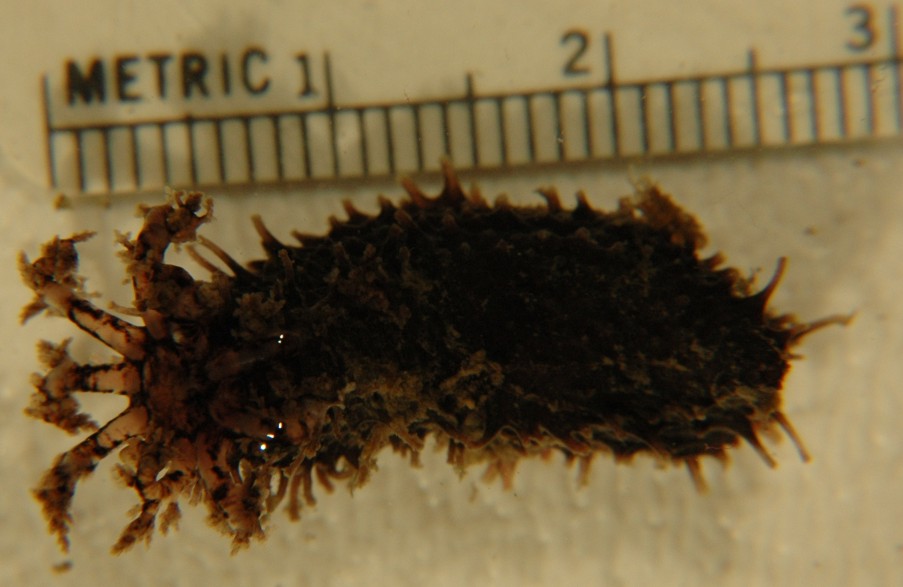 |
| Phylum Echinodermata
Class Holothuroidea Order Dendrochirotida Family Cucumariidae |
|
| Pseudocnus curatus from Coffin Rocks. | |
| (Photo by: Dave Cowles, July 2006) | |
How to Distinguish from Similar Species: Cucumaria pseudocurata is intertidal, and has tube feet all in rows instead of scattered on the dorsal side. It also usually has 8 large and two small oral (buccal) tentacles and its body ossicles are simple oval, perforated plates. Pseudocnus lubrica (formerly Cucumaria lubrica) looks very similar to this species but usually varies from white to brown with black specks on the dorsal side, plus its ossicles are bumpy, lobed buttons (mitochondrial DNA has also shown it to be a different species).
Note: This species keys as Cucumaria lubrica in Kozloff's 1996 printed key. See Lambert, 1997 for the updated description.
Geographical Range: Uncertain because of recent taxonomic change. At least from SE Alaska/BC border to Vancouver Island, and probably to central California.
Depth Range: Mostly Subtidal
Habitat: Rocky areas in strong current or surf.
Biology/Natural History: [Much of this info is based on papers referring to the species as C. lubrica.] In the Rosario area they often form large, almost continuous aggregations subtidally on rocks such as on areas of Sares Head and Coffin Rocks (photo). The aggregations look like a forest of small dark tentacles surrounded by an expanse of sediment trapped in almost gelatinous mucus. While the aggregations may almost completely cover the surface and individual cucumbers cannot be seen under the sediment-covered mucus, they can easily be isolated by digging a finger into the mass and removing some individuals. The cucumbers suspension feed on small phytoplankton. Besides aggregating (the aggregates are not clones), this species broods the young. The mother cucumber transfers her 1 mm diameter eggs to her ventral surface, where they develop into juveniles. Probably does not feed from October to March, and brooding females do not feeed. Spawning is from November to December on S. Vancouver Island. Males lift their oral ends off the substrate and release long strands of sperm. The sperm sink to the bottom and become entangled in nearby cucumbers. Females lift their oral ends and arch backwards. Eggs roll down the female's ventral surface upon release (many are washed away). She then re-attaches to the rock, holding some eggs beneath her. Eggs are brooded January to March. They hatch in 6 weeks but the female broods the young for another 4-8 weeks. Predators include the seastars Solaster stimpsoni, Solaster dawsoni, Leptasterias hexactis, and Pycnopodia helianthoides. The cucumber does not show an escape response to these stars. The cucumber is toxic to many fish. The saddleback amphipod Parapleustes sp eats the eggs, as does a nematode. The species is parasitized by the gastropod Thyonicola mortenseni.
| Return to: | |||
| Main Page | Alphabetic Index | Systematic Index | Glossary |
References:
Dichotomous Keys:Carlton, 2007
Kozloff 1987, 1996
General References:
Lambert,
1997
Scientific Articles:
Arndt, A., C. Marquez, P. Lambert, and M.J. Smith, 1996.
Molecular
phylogeny of eastern Pacific sea cucumbers Cucumaria lubrica
and
Leptosynapta
clarki (Echinodermata-Holothuroidea). Canadian
Journal of Zoology
52: 1389-1396
Web sites:
General Notes and Observations: Locations, abundances, unusual behaviors:
We have seen large aggregations of this species covering large boulders at depths of about 10-12 meters on Sares Head and on Coffin Rocks.
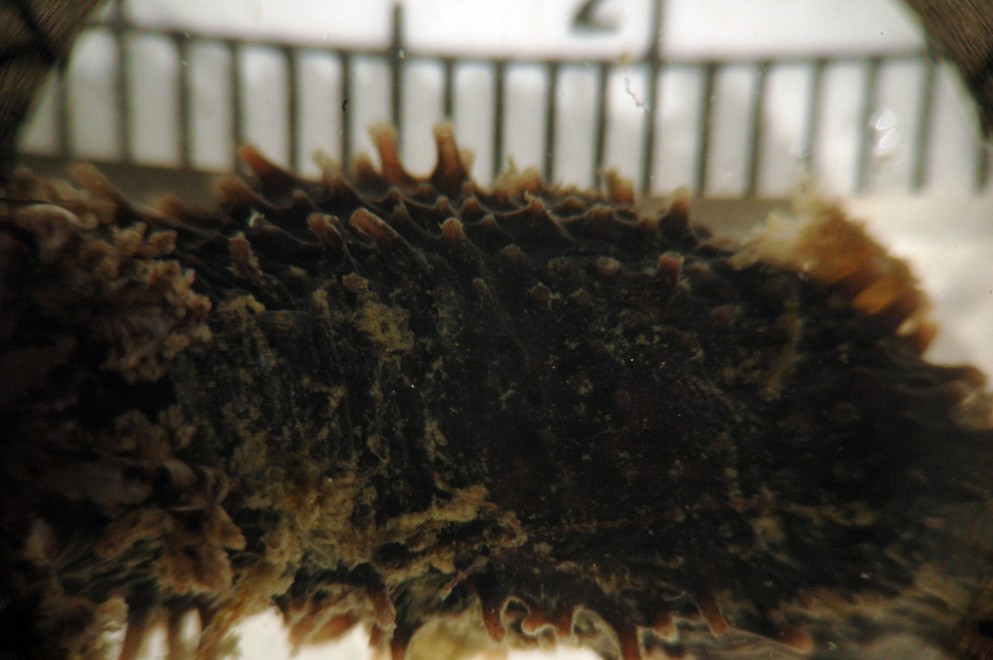
The tube feet on the dorsal side are mostly in ambulacral
rows but a few are scattered along the margins.
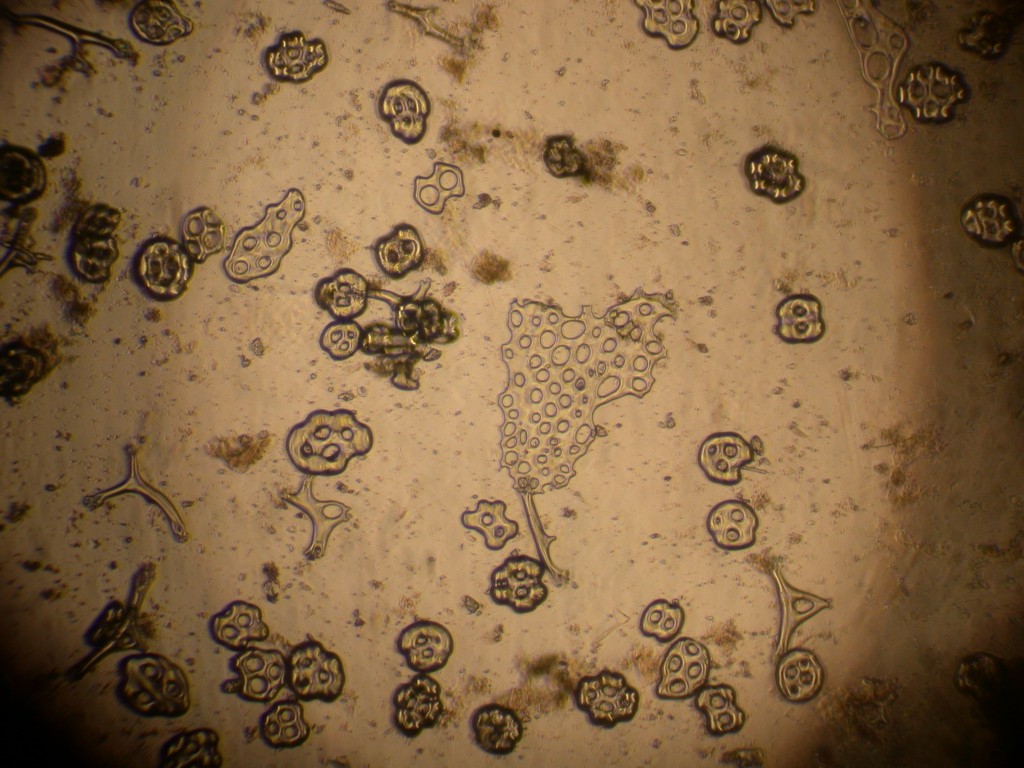 |
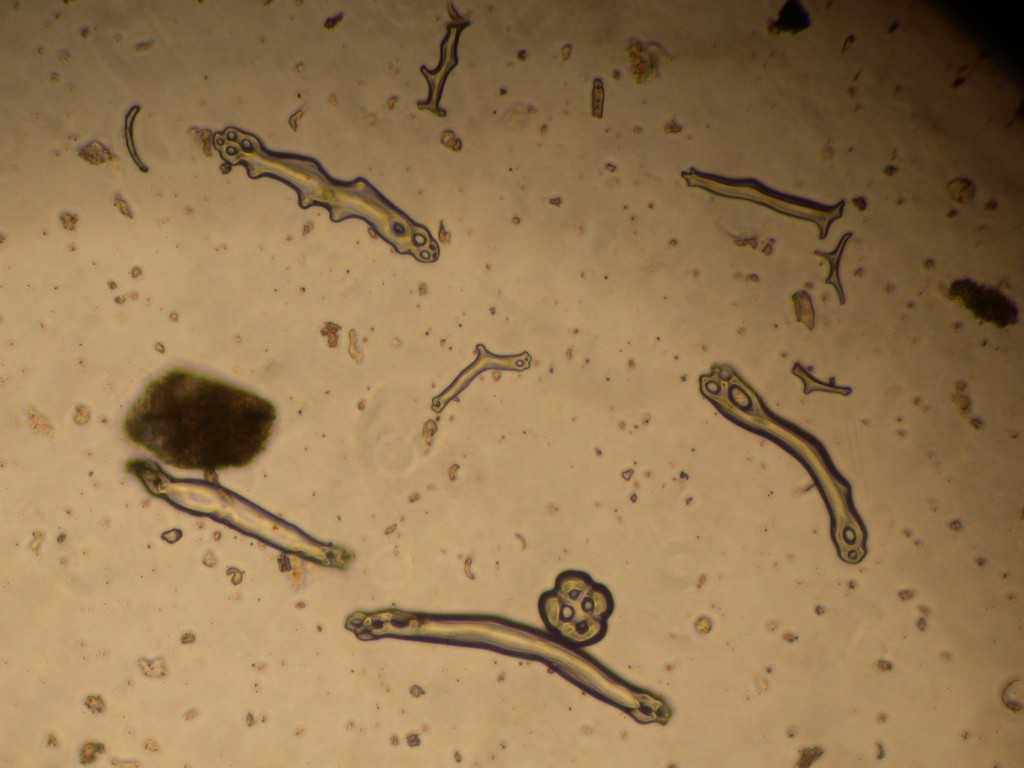 |
| Ossicles from posterior body wall and tube feet | Ossicles from oral tentacles |
| The ossicles in this species are perforated plates in the body wall (left) and rodlike ossicles, some of which have three branches, in the oral tentacles (right). | |
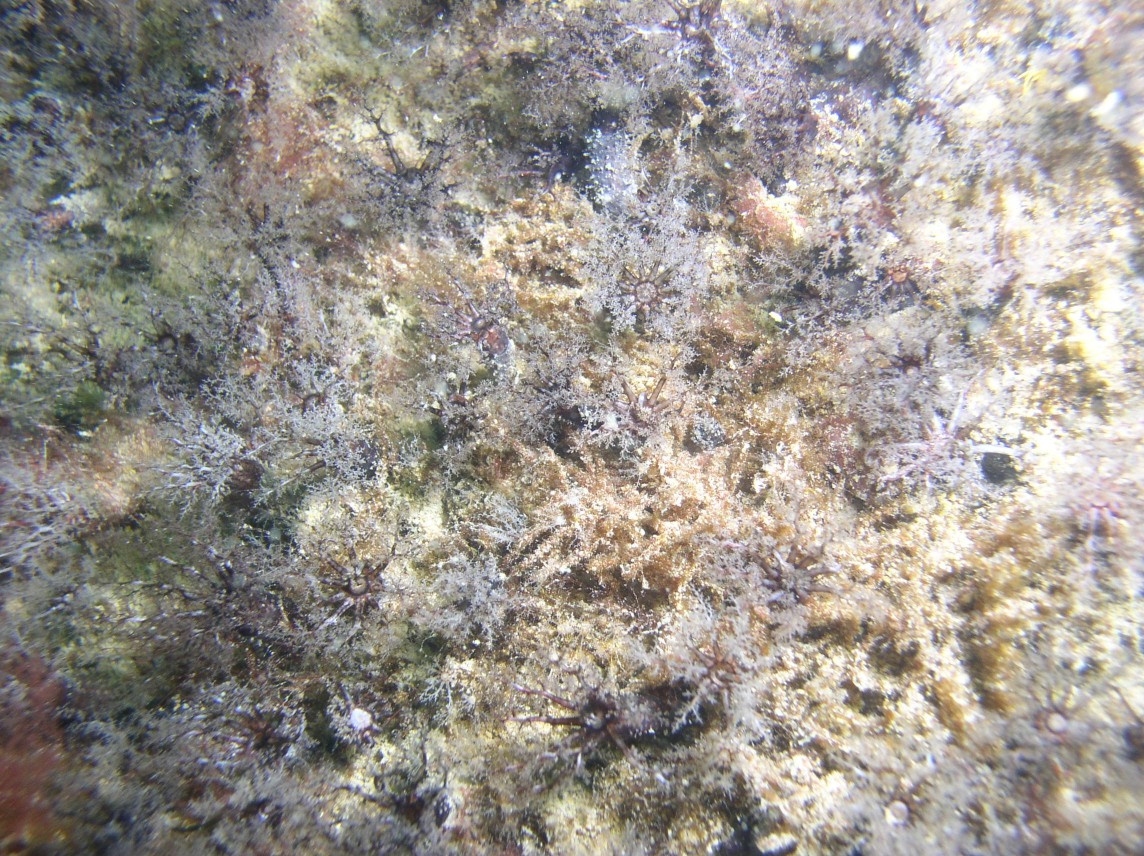
Here is an aggregation of Pseudocnus curatus
completely coating
the bottom at Coffin Rocks. Photo June 2007 by Kirt Onthank
Authors and Editors of Page:
Dave Cowles (2006): Created original page